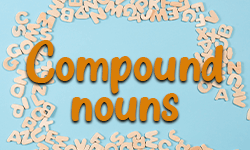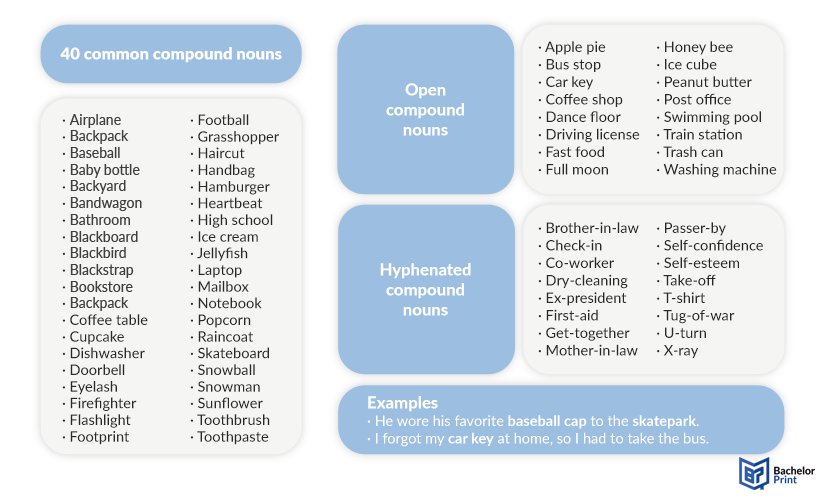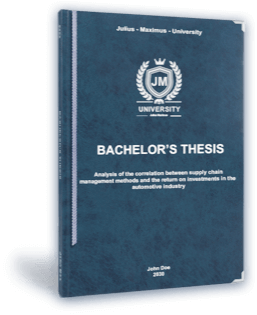
Compound nouns are an essential aspect of the English language, formed by fusing two or more words to create a new meaning. These compound words follow specific language rules that can vary depending on how the components are joined, whether as one word, hyphenated, or separated. Understanding compounds is crucial not only for mastering everyday communication but also for academic writing, where clarity and precision are key.
Definition: Compound nouns
This type of compound word is created by merging a noun or a different part of speech with another to form a noun. The compound elements can range from adverbs to adjectives and can even include prepositions. The new compound noun needs to be made of two or more constituents and can be written as one or two words or joined by a hyphen. When it comes to compound words in general, there can be different spellings between British English vs. American English, especially when it comes to hyphenation.
Types
Compounds come in several types: closed, hyphenated, and open. However, there are other common types that are also worth mentioning. All types of compound nouns will be explained below, along with examples.
Closed forms are pieced together and written as a single word without spaces.
Hyphenated compounds are connected with hyphens for easier readability.
Open forms are written as separate words but function as one.
Proper compound nouns include proper nouns (specific people, places, or things) that are capitalized most of the time.
These are less common and used for stylistic or poetic purposes. They can involve unusual or creative combinations of words to express an idea.
Formations
In the table below, we have listed eleven possible formations with several examples each.
| Compound constituents | Examples |
|---|---|
| noun + noun | armchair, firefly, sweatshirt |
| noun + verb |
rainfall, heartbreak, sunset |
| noun + gerund | handwriting, mountain climbing, sightseeing |
| gerund + noun | sewing machine, swimming pool, fishing net |
| verb + noun | breakwater, surfboard, bathing costume |
| verb + adverb | runaway, throwback, takeover |
| verb + preposition | breakthrough, lookout, hold-up |
| adverb + noun | afterlife, forefront, overcoat |
| adverb + verb | output, outlet, intake |
| adjective + noun | greenroom, hot dog, blueberry |
| adjective + gerund | dry-cleaning, long-lasting, public speaking |
Examples
In this section, you’ll find numerous example sentences.
The image below depicts numerous common compound nouns, as well as example sentences.

List
We have created a useful list of 230 compound nouns below.
| Compound nouns |
|---|
| aircraft |
| airline |
| airport |
| armchair |
| armpit |
| backache |
| background |
| backlash |
| barnyard |
| baseball |
| basketball |
| loo |
| battlefield |
| battleship |
| bedroom |
| bedtime |
| hoarding |
| birdwatching |
| birthday |
| blackboard |
| blueberry |
| bobcat |
| bottle opener |
| booklet |
| bookshelf |
| bookworm |
| boyfriend |
| brainstorm |
| breakfast |
| briefcase |
| brother-in-law |
| bulldog |
| bus stop |
| buttercup |
| butterfly |
| car park |
| carpet |
| catfish |
| cat walking |
| chairman |
| chairwoman |
| chalkboard |
| check-in |
| checkmate |
| checkout |
| cheesecloth |
| chopstick |
| classmate |
| clockwork |
| comeback |
| copycat |
| countdown |
| courthouse |
| cowboy |
| cowgirl |
| crackpot |
| crossbeam |
| crybaby |
| cupboard |
| cupcake |
| cupboard |
| daredevil |
| darkroom |
| daughter-in-law |
| daydream |
| dishwasher |
| dishwater |
| doorbell |
| doorknob |
| doorstop |
| doorway |
| dragonfly |
| drainpipe |
| drawbridge |
| drawstring |
| driftwood |
| driveway |
| driving licence |
| drumstick |
| dustpan |
| earache |
| eardrum |
| earphone |
| earpods |
| earring |
| earthquake |
| earthworm |
| aubergine |
| evergreen |
| eyeball |
| eyebrow |
| eyeglasses |
| eyelash |
| eyelid |
| father-in-law |
| fingerfood |
| fingerprint |
| firefighter |
| firefly |
| firework |
| fishbowl |
| fish soup |
| flashback |
| football |
| footprint |
| forecast |
| friendship |
| full moon |
| gateway |
| gentleman |
| goldfish |
| grandfather |
| grandfather clock |
| grandmother |
| grapefruit |
| grasshopper |
| greenhouse |
| haircut |
| hallway |
| handcuff |
| handwriting |
| headache |
| heartbeat |
| helping hand |
| main road |
| home owner |
| homework |
| horsefly |
| houseboat |
| household |
| ice axe |
| ice cream |
| iceberg |
| ice skating |
| inland |
| input |
| inside |
| intake |
| jigsaw |
| keyhole |
| kneecap |
| ladybird |
| landlady |
| landlord |
| landslide |
| leadership |
| lifespan |
| lighthouse |
| magnifying glass |
| magnifying lens |
| marketplace |
| mealtime |
| moonlight |
| mother-in-law |
| newspaper |
| nightmare |
| nobody |
| notebook |
| oatmeal |
| onset |
| outdoors |
| outlet |
| output |
| outside |
| overdose |
| pancake |
| partnership |
| password |
| photocopy |
| playground |
| policeman |
| policewoman |
| popcorn |
| postman |
| postwoman |
| quicksand |
| railway |
| railway |
| mackintosh |
| raindrop |
| raspberry |
| rattlesnake |
| ringworm |
| sailboat |
| sandbag |
| sandcastle |
| scarecrow |
| seafood |
| seashell |
| seahorse |
| sister-in-law |
| situationship |
| skateboard |
| skyscraper |
| snowboard |
| snowman |
| software |
| son-in-law |
| starfish |
| stargazing |
| starlight |
| strawberry |
| sunflower |
| sunlight |
| sunrise |
| sunroom |
| sunset |
| sunshine |
| swimming pool |
| tablespoon |
| tapeworm |
| teacup |
| teapot |
| teardrop |
| teaspoon |
| thunderstorm |
| timetable |
| toolbox |
| underworld |
| vineyard |
| visiting card |
| waistline |
| waiting room |
| wallpaper |
| wardrobe |
| washing machine |
| webdesign |
| website |
| weekend |
| workshop |
- ✓ 3D live preview of your individual configuration
- ✓ Free express delivery for every single purchase
- ✓ Top-notch bindings with customised embossing

The plural of compound nouns
Now that we know countless compounds, where do we put the “s” for pluralization? The guide below will help you form plurals for each type.
Closed
With closed compounds, you simply add an “-s” or “-es” to the end of the word.
Hyphenated
Typically, the main word or semantic head of the compound is pluralized.
Open
Open compounds also normally pluralize the main head of the word.
No main word
If there is no main word that particularly sticks out, add the plural marker to the last word.
Special case
Note: For compound nouns like “handful,” “teaspoonful,” and “mouthful,” dictionaries are divided. So, when pluralizing “handful,” for example, you can either say “handsful” or “handfuls” (preferred by modern dictionaries) depending on the relevant style guide you’re using.
FAQs
A noun is a compound if it combines two or more words to create a single concept (e.g., “toothbrush”). The words can be written as one word (closed), hyphenated, or as separate words (open).
- Toothbrush
- Football
- Mother-in-law
- Ice cream
- Post office
- Washing machine
- Haircut
- Doorbell
- Classmate
- Lighthouse
- Closed compounds: Written as one word (e.g., “notebook”).
- Hyphenated compounds: Linked with a hyphen (e.g., “father-in-law”).
- Open compounds: Written as separate words but function as one (e.g., “swimming pool”).
- Follow grammar rules: Match plurality and word order to the main part of the compound.
Pluralize the main noun
Mother-in-law → Mothers-in-law
Attorney at law → Attorneys at law
Add “-s” or “-es” for one-word compounds
Toothbrush → Toothbrushes
Notebook → Notebooks